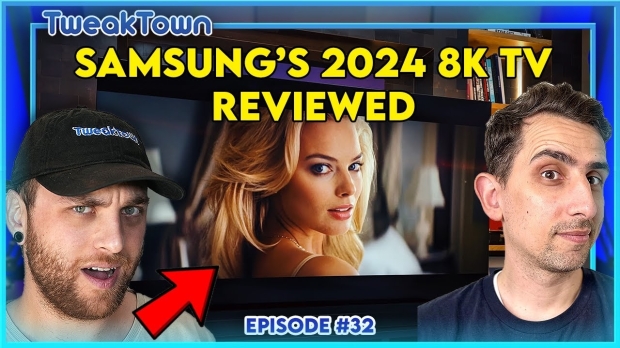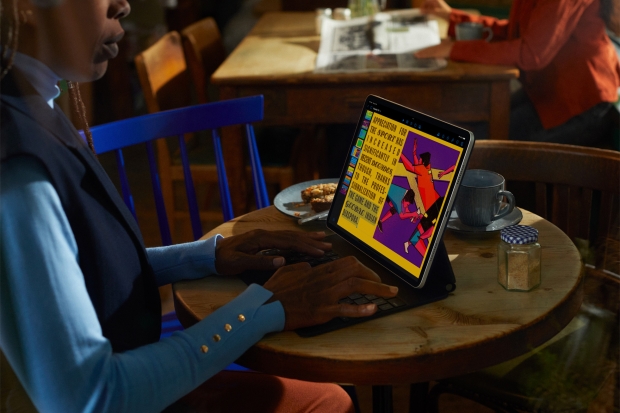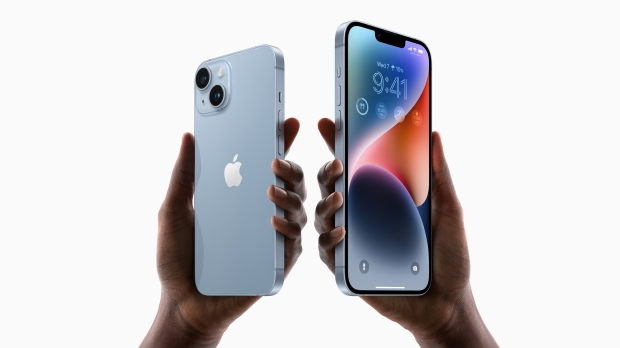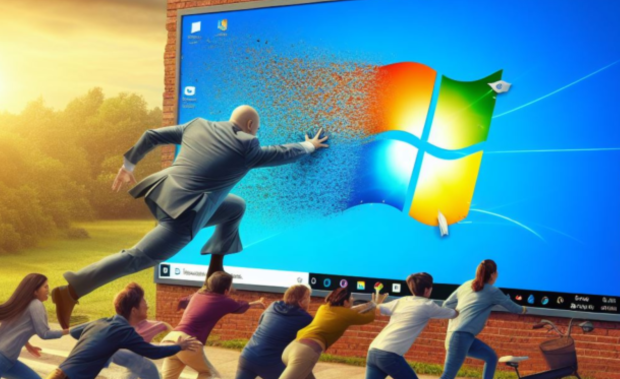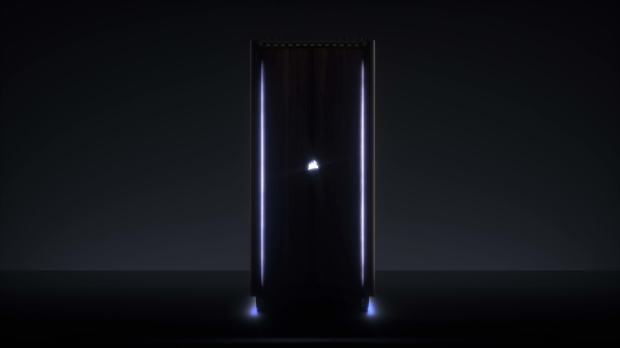TT Show Episode 33 - Samsung's Flagship 8K TV, Intel CPU Controversy, the Ultimate NAS Setup
This week on The TT Show, Kosta spends an entire day with the flagship 85-inch Samsung QN900D Neo QLED 8K Smart TV in Sydney, testing how its new impressive NQ8 AI Gen3 Processor handles upscaling and gaming. Kosta also discusses his latest month-long home project: building the Ultimate Home Entertainment Server with an ASUSTOR NAS and Viper Gaming NVMe SSDs.
Moving on from thousands of movies, games, and music on a server, Jak and Kosta also discuss the latest controversy surrounding Intel's high-end 13th and 14th Gen Cire i9 CPU. With widespread reports of instability and motherboard makers issuing BIOS updates, Intel seemingly passes the blame while confirming it's still 'looking into the issue.'
The duo also talks about the recent decline in console sales and AMD's gaming revenue and what this means, as well as new reports seemingly confirming that AMD's upcoming RDNA 4 GPUs could feature a massive upgrade to ray-tracing performance, which will probably make its way into the PlayStation 5 Pro.
Apple's iPhone 16 might have a new OLED display driver on the way
When Apple releases the iPhone 16 family of devices later this year there could be a new OLED display driver inside, according to a new report. While Apple has yet to confirm the news, it's thought that Novatek has picked up a new order for drivers ahead of the iPhone 16 manufacturing run.
The news, which comes via a paywalled DigiTimes report that was spotted by 9to5Mac, notes that a big increase in Novatek's orders of OLED Display Driver ICs (DDI) has been observed, with Apple being the customer in question.
Novatek is no stranger to Apple's supply chain so this move isn't a particularly surprising one, but it's another indication that Apple is readying the supply chain for its next generation of iPhones. It might also suggest that Apple is keen to diversify production, ensuring that there is less chance for a bottleneck further down the line.
Continue reading: Apple's iPhone 16 might have a new OLED display driver on the way (full post)
Google is at risk of losing tens of billions of dollars to the US government
Google and the US government are presenting their closing arguments to Judge Amit Mehta regarding the antitrust lawsuit that may result in Google being penalized for its dominance in the search engine market.
The US government has accused Google of violating anticompetitive laws with its Google Search engine, which is easily the most popular search engine in the world. The lawsuit alleges Google paid electronics vendors and developers billions of dollars to make Google the default search engine on the device, which created a monopoly within the market where other search engines are unable to compete.
Google revealed last year that it spent $26.3 billion in 2021 on deals for its search engine to be default on various internet browsers. Apple received between $18 billion and $20 billion to keep Google the default search engine on Safari. As you can probably imagine, Google doesn't believe it has a monopoly on the market, or broken any anti-compete laws and that its dominance on the market is a result of its product simply being the best.
OLED iPad Pro manufacturing woes explained, and it's all because of that new display
Apple is holding a streamed event on July 7 and it's looking increasingly likely that the company will finally unveil the fabled OLED iPad Pro. We've been hearing rumors about this table for months, and the expected release date for it has continually been pushed back amid concerns about delays. Now, a new report has sought to add some context as to why those delays might have cropped up.
According to a paywalled DigiTimes report, picked up by 9to5Mac, Apple's requirement for a new type of OLED display has continually caused issues for suppliers. The report notes that the new iPad's OLED panels use a hybrid substrate that combines the glass substrate with polyimide materials. It's thought that this combines the advantages of both flexible plastic substrates and rigid glass substrates, all the while eliminating the issues associated with both. Essentially, buyers get the best of both worlds.
Apple is also set to use two-stack tandem technology for these displays, a first for the company. DigiTimes explains that this means that two OLED layers are stacked, as the name suggests, playing a high refractive index charge generation layer (CGL) in between them to connect the two organic light-emitting layers. The upshot? Making these displays is harder than making the other OLED displays Apple has used in the past.
Scientists discover unexpected visitor lurking on the ISS
Last month, NASA confirmed the presence of unexpected visitors aboard the International Space Station (ISS), which has now been studied by researchers who have penned a paper in a scientific journal.
The unexpected visitors turned out to be multi drug resistant bacteria that has mutated into several strains that have never before seen on Earth. Researchers write the bacteria has transformed into thirteen strains, mutating from the original strains that were transported to the ISS from Earth. The team behind the paper believes the bacteria has mutated into at least thirteen different strains, which was caused by the microgravity environment within the ISS and the increase in radiation exposure.
As for the dangers of this new bacteria, astronauts aboard the ISS are only in danger of being infected by the bacteria if their immune system is already compromised, meaning they are already sick in some way. Luckily, the ISS is one of the most monitored locations in the world, and so are the astronauts aboard it. ISS passengers are required to perform a rigorous workout routine to maintain overall health, which is used to counteract their degrading immune systems caused by being in space.
Continue reading: Scientists discover unexpected visitor lurking on the ISS (full post)
LG adds Apple Music Dolby Atmos support to its TVs, making it the first to do so
LG has become the very first TV company to add support for Dolby Atmos Apple Music playback to its products, and you won't need to have one of its latest sets to benefit, either. The company says that TVs from as far back as 2018 are good to go, and TVs that don't natively support Dolby Atmos will also work when paired with a compatible soundbar.
The discovery was first made by FlatPanelsHD and later confirmed by LG in a statement to the outlet. This means that LG has set the bar for other TV companies, but it remains to be seen if those companies already have plans in motion to add their own Dolby Atmos support.
While TVs with support for Dolby Atmos can of course play Apple Music via their built-in speakers, you're going to want to hook up a soundbar or compatible audio system to get the most out of the experience. Apple Music isn't the only streamer to offer Dolby Atmos support, either, with Amazon Music and Tidal also offering such a thing - although there is no smart TV support currently. Spotify simply hasn't added Dolby Atmos to anything yet, although that's likely something that will launch if and when the fabled lossless music support arrives.
iOS 17.5 is adding a new Repair State mode to make sending iPhones for service easier
Apple's getting ready to announce iOS 18 to the public in a few weeks, but before that, there's another beta program that needs to come to an end. That beta is for iOS 17.5, and the latest beta release has given us a hint at a new feature that will make it easier for people to send their iPhone to Apple when it needs to be repaired.
Currently, having Apple repair an iPhone requires that people disable the Find My feature for a couple of reasons. One is the fact that it ensures the iPhone is actually owned by the person who is trying to get it worked on. Two, it means that if Apple needs to swap the iPhone out for a new one, Find My is already disabled which means that the process of doing that is relatively simple. But now Apple is reportedly getting ready to make a new change that will remove the need to turn Find My off for good.
That news comes after 9to5Mac reported on evidence found in the iOS 17.5 beta that includes mention of a Repair State mode, with some beta testers already able to enable it. The new mode appears to be one that allows people to enable the feature which allows Apple to do what it needs to do without having the Find My feature disabled entirely.
Meta announces new iPhone spatial video support for the Quest, but it doesn't make much sense
Spatial video is a pretty cool feature and it's one that iPhone and Apple Vision Pro owners have been enjoying for a little while now. The feature takes videos that have been recorded using stereoscopic cameras to create a 3D effect, and while iPhones can't use that extra information to create a 3D video, the Apple Vision Pro of course can. But you need to capture that content using the headset itself or an iPhone 15 Pro series device. The situation was the same with the Meta Quest headset, too. But things have changed somewhat.
Those things changed thanks to a Meta press release that both sounds amazing and makes little sense at the same time. That press release argues that a new Meta Quest v65 software update brings with it a number of new features, not least the ability to view spatial videos captured via other cameras, not just the iPhone 15 Pro.
The press release says that users can upload videos using the Meta Quest mobile app, enabling them to view content "like never before." The press release then goes on to reiterate the fact that this applies to any iPhone, noting that while playback originally required that content be captured via an iPhone 15 Pro or iPhone 15 Pro Max, that's no longer the case. In fact, any iPhone that has iOS 17 or later installed can provide spatial videos for use on the Meta Quest headset.
Microsoft's announcement to kill its most popular operating system isn't working
In February, Microsoft announced it was killing support for its most popular operating system, Windows 10, but the company's efforts to transition users from Windows 10 to Windows 11, isn't working.
Windows 10 is by far Microsoft's most popular operating system at the moment with a market share of more than 70%, according to Statcounter. Despite the company announcing it was ending support for the operating system in October 2025 users still aren't making the switch over to Windows 11, as Statcounter reports that for the first time since late 2023 Windows 10 has climbed past 70% market share.
According to the firm;s April numbers, Windows 10 climbed nearly 1% in market share, with Windows 11's market share dipping to 25.68%, which indicates the new Windows 10 users came directly from Windows 11. Why is this happening? Extremetech reports Windows 10 users may be climbing due to refurbished PC's being dumped in retail channels, and due to many of these PCs having an SSD and being a lot cheaper, buyers may find them very attractive in an effort to save money and still acquire a decent rig.
NVIDIA DGX GB200 AI servers expected to sell 40,000 servers in 2025, mass production in 2H 2024
NVIDIA's new DGX GB200 AI server is expected to enter mass production in the second half of this year, with the volume expected to hit 40,000 units in 2025.
NVIDIA and Quanta are the two suppliers of NVL72 and NVL36 cabinets, respectively, with the NVL72 packing 72 GPUs and 36 Grace CPUs. Each of the AI server cabinets cost 96 million NTD (around $3 million USD or so).
The new NVIDIA DGX NVL72 is the AI server with the most computing power, and thus, the highest unit price. Inside, the DGX NVL72 features 72 built-in Blackwell-based B200 AI GPUs and 36 Grace CPUs (18 servers in total with dual Grace CPUs and 36 x B200 AI GPUs per server) with 9 switches. The entire cabinet is designed by NVIDIA in-house, and cannot be modified, it is 100% made, tested, and provided by NVIDIA.
Corsair One i500 Mini Gaming PC: new design, Core i9-14900K, RTX 4080 SUPER, costs $3600
Corsair is about to unveil its new One i500 Mini Gaming PC, but Newegg accidentally listed the new PC showing off the new design and specs. Check it out:
Corsair's new SFF system features a Dark and Light Wood design that looks beautiful, being quite the departure to the company's usual styling. Inside, Corsair has beefed up the hardware considerably, with an Intel Core i9-14900K processor that is liquid-cooled, and an NVIDIA GeForce RTX 4080 SUPER graphics card.
There's also 2TB of SSD (Gen4, I'm presuming) and 32GB of DDR5 memory, with the Corsair logo on the front that will light up, with LED strips on each side of the case. Corsair uses an Intel B760M motherboard, and an in-house Corsair 1000W SFX-L 80+ Gold PSU, with Wi-Fi 6E and Bluetooth 5.3 support.

